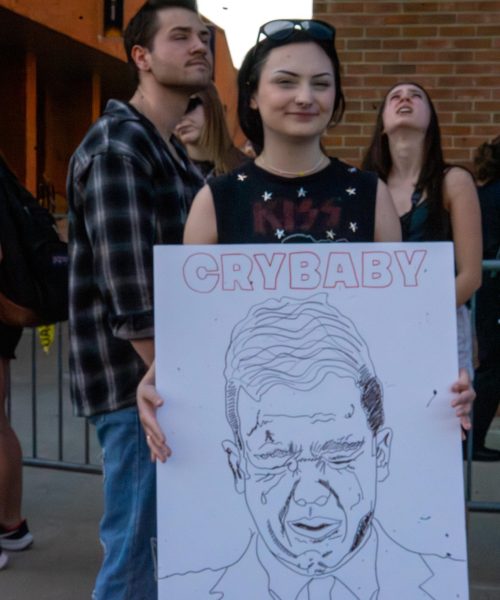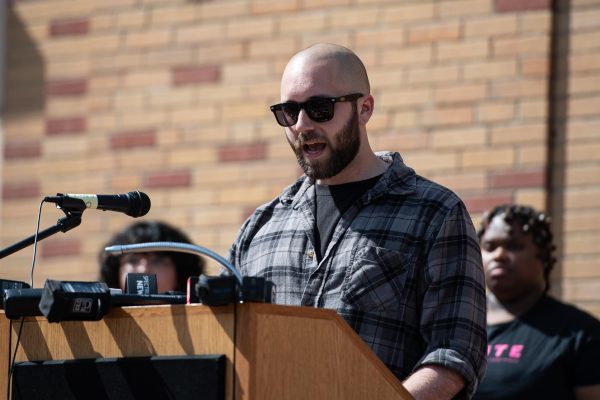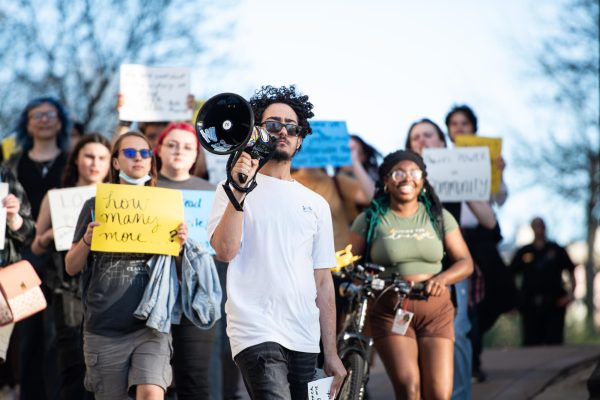U.S. still wary of Cuba’s socialism
April 29, 2005
Cuba is the largest country in the Caribbean and one of five remaining communist states in the world. It has been under the rule of Fidel Castro since 1959 when he overthrew the dictator Fulgencio Batista.
In the last decade, the United States has taken a hard-line approach to Cuba, strengthening the embargo and restricting American travel to Cuba and Cuban travel to the United States.
This is partly due to President George W. Bush and Florida Gov. Jeb Bush’s need to court the Cuban-American vote in Florida, which is large enough to sway both state and national elections, said Julio Pino, associate professor of history, who lived in Cuba until age 7.
“This is still the generation who fled Cuba in 1959,” Pino explained.
Therefore, they are primarily conservative because they are anti-communist and admire free enterprise, he said. This causes politicians indebted to the Cuban-American constituency to take a hard stance against Castro.
Another factor strengthening Washington’s anti-Castro agenda was the involvement of Cuban Americans in national politics in the 1980s, Pino said.
As the U.S. embargo against Cuba is strengthened, Cuba is finding ways around the United States by trading with American allies such as Canada and Spain, Pino said. And Cuba’s economy has been on the upswing as more tourism to the country pumps foreign dollars into Cuba.
“Everybody expected in the early ’90s that Castro would fall,” Pino said. “Cuba’s economic recovery just convinced the world that the U.S. embargo was a stupid idea.”
The embargo is seen by many as counter productive because it encouraged Cuba to seek out economic relationships with Canada and Spain, who made profits in Cuba that the United States could have been making.
Stupid idea or not, it isn’t likely to change the minds of American foreign policy makers until the older Cuban-American generation is no longer politically important.
“(The embargo) gets them votes,” Pino said, “but it’s not getting them what they wanted, which is the fall of the communist regime.”
The Cuban government is not purely communist, however. It has a mixed model economy similar to China’s, where the state borrows foreign money and allows foreign investment. Its market side of the economy is not as large as China’s, and the state still owns the largest means of production.
A primary concern with the current state of the Cuban economy is the growing division between economic classes in the country.
“It’s by no means a worker’s paradise; there are growing class divisions,” Pino said.
A Cuban can make more money as a taxi driver than as a doctor because market industries are more profitable than the socialist industries.
Though Cuba isn’t a paradise, Pino said Cubans don’t want to trade Cuba’s socialism for the United States’ or Latin America’s individual freedom that makes the rich richer instead of taking care of everyone to a certain level.
“Where socialism comes in is because there is a minimum standard of living,” Pino said.
Anne Morrison, assistant professor of education, went to Cuba in 2003 with a group of graduate students and members of the community.
Cuba is one of the few countries left we haven’t Americanized, she said. While there, she saw the results of a government that gives all its people universal health care, food, jobs and free education from kindergarten through college.
“The children have bright, shining faces, and they’re healthy,” Morrison said. “Everyone was fed, which I don’t feel whenever I travel in (the United States).”
This minimum standard of living is another reason the Cuban people accept Castro’s rule without too much protest.
“They saw the Cuban government providing things for the people that weren’t there before (Castro),” Pino said.
Morrison said it is amazing to her that Castro has such a power over the Cuban people.
“I’m enamored with Castro, and I get criticized for that,” Morrison said. “I don’t like the oppression, and I don’t like the danger in his politics, but I do appreciate the charisma.”
One of the first things that struck her about Cuba was the literacy rate.
“I started to become interested in how illiteracy was eradicated in the country in so little time,” she said. She learned that the younger people would go out for the summer to homes in even the most remote, poverty-stricken places and teach the people there to read.
In addition to happy children and old American cars, Morrison said she also saw remnants of the socialist revolution.
“They still are in love with Che, and many of them are still in love with the revolution, but many are not,” she said.
Ernesto “Che” Guevara was a Cuban revolutionary who, in 1956, crossed the Caribbean with Castro, invaded Cuba and overthrew the dictator Fulgencio Batista. This was the first and only successful socialist revolution in the Americas.
“There is a dissident movement,” Pino said.
Unlike those of the past, however, this movement seeks peaceful change, he said.
Castro allows the dissident movement to exist as long as it stays largely underground, Pino said. The movement has calmed down since the economy recovered from its low point in the 1990s.
Besides, Morrison said, they shoot dissidents in Cuba.
Morrison admired many things about Cuba and its people, such as the dances and music held every night and attended by the whole community.
“It was just heaven,” she said.
Cubans are an accomplished people, Morrison said.
“I had that feeling of intelligence,” she said.
But there were unsettling parts of socialism, too. She visited a library filled with Stalin, Lenin and Marx, mostly propaganda — none of the books were printed after the revolution. At first, it was interesting, she said.
“But what if that’s all I knew?” Morrison said. “The romance kind of falls away.”
Contact student politics reporter Jessica Rothschuh at [email protected].























